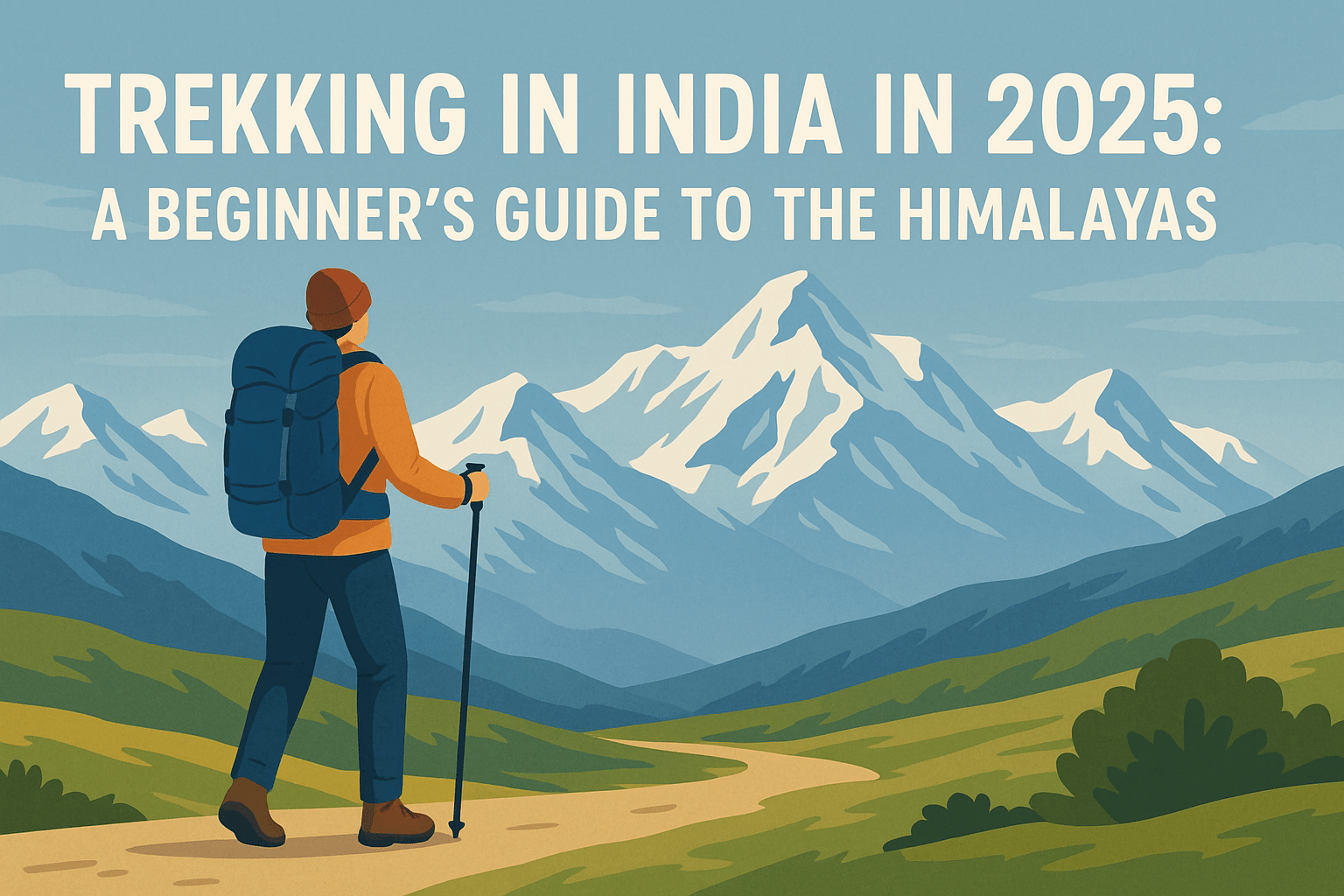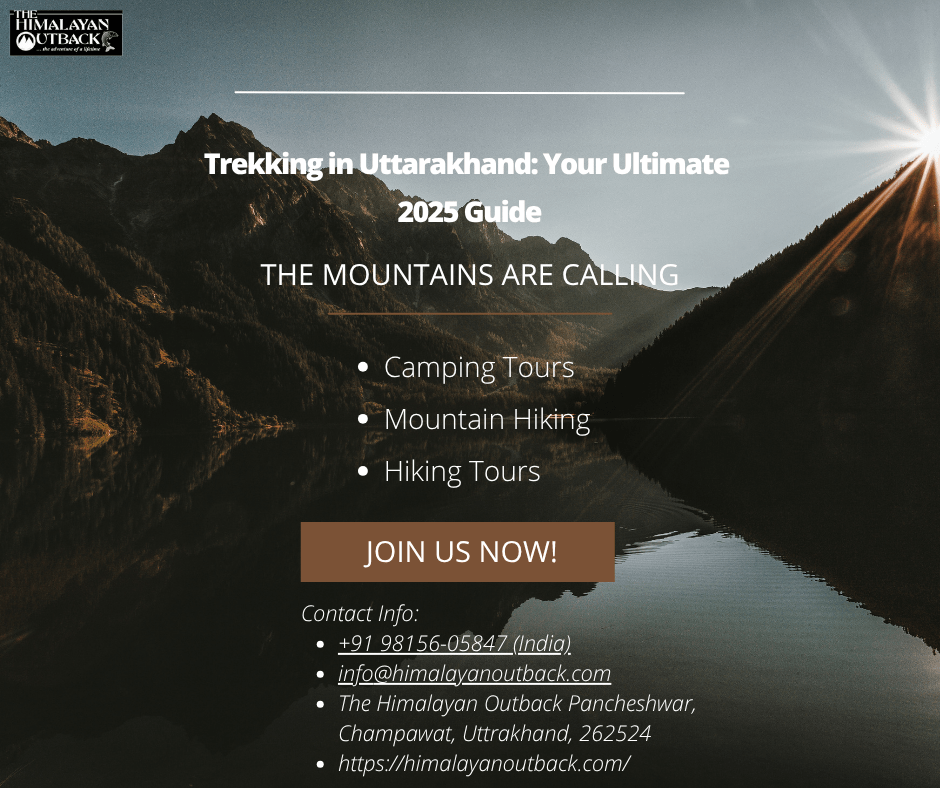The Indian Himalayas have long captivated adventurers with their unmatched beauty and serenity. Stretching over 2,400 kilometers, this majestic mountain range offers an experience like no other. For foreign travelers, trekking in India in 2025 is a golden opportunity to immerse themselves in breathtaking landscapes, vibrant cultures, and tranquil spirituality.
This guide will introduce you to trekking in India, covering essential information to ensure your adventure through the Indian Himalayas is both safe and unforgettable. From must-visit trails to practical tips, get ready to plan the trek of a lifetime.

Why Trekking in the Indian Himalayas is a Must
The Indian Himalayas are a treasure trove of natural wonder. Home to some of the planet’s highest peaks, sprawling alpine meadows, and ancient monasteries perched at dizzying heights, they offer some of the most diverse trekking experiences in the world.
Here’s what sets trekking in India’s Himalayas apart:
- A Diverse Range of Trails: Whether you’re a beginner or a professional mountaineer, there’s a trail for everyone. Easy day hikes, moderate multi-day treks, and challenging expeditions make up a well-rounded itinerary for adventurers of all levels.
- Cultural Immersion: Trekking here isn’t just about nature. You’ll pass through remote villages, interact with welcoming locals, and witness timeless Buddhist traditions, Hindu temples, and monasteries hidden in the mountains.
- Seasonal Beauty: From snow-covered trails in winter to lush green landscapes during the monsoons, every season in the Himalayas transforms its trails into unique spectacles of beauty.
- Rare Wildlife: The Indian Himalayas host diverse flora and fauna, including snow leopards, red pandas, and rhododendron-filled forests, offering a rare treat for wildlife enthusiasts.
Simply put, trekking in India allows you to experience untamed wilderness while engaging with ancient cultures and incomparable scenic beauty.
Top Himalayan Treks for Foreign Travelers
If you’re new to trekking in India, start with these iconic treks spread across the Indian Himalayan range. Each offers a distinctive experience that will leave you yearning for more.
1. Hampta Pass (Himachal Pradesh)
- Difficulty: Easy to moderate
- Best Time to Visit: June to September
- Why It’s Special: Hampta Pass is an excellent trek for beginners. The route offers striking contrasts, taking you from lush green valleys of Kullu to arid, barren, almost otherworldly landscapes of Spiti Valley. Stunning glaciers, flower-clad meadows, and river crossings make this a trek to remember.
- Duration: 4–5 day
2. Valley of Flowers (Uttarakhand)
- Difficulty: Easy
- Best Time to Visit: July to September
- Why It’s Special: This UNESCO World Heritage Site is heaven on earth for nature lovers. The valley bursts into color during the monsoon with wildflowers, including cobra lilies, blue poppies, and orchids. Combine it with a visit to Hemkund Sahib for spiritual upliftment.
- Duration: 4–6 days
3. Chadar Trek (Ladakh)
- Difficulty: Challenging
- Best Time to Visit: January to February
- Why It’s Special: Known as the “Frozen River Trek,” the Chadar Trek takes you over the frozen Zanskar River. Add icy caves, steep gorges, and bone-chilling temperatures for a one-of-a-kind, adrenaline-filled experience.
- Duration: 8–9 days
4. Goechala Trek (Sikkim)
- Difficulty: Moderate to challenging
- Best Time to Visit: March to May and September to November
- Why It’s Special: This trek offers dramatic views of Mount Kanchenjunga, the world’s third-highest mountain. It’s also notable for its dense forests, pristine alpine lakes, and surreal sunrises that light up the Himalayan skyline.
- Duration: 10–11 days
5. Roopkund Trek (Uttarakhand)
- Difficulty: Moderate
- Best Time to Visit: May to June and August to October
- Why It’s Special: Also known as the “Mystery Lake Trek,” this trail leads to a glacial lake filled with centuries-old human skeletons. Roopkund combines mystery, history, and incredible views of towering Himalayan peaks.
- Duration: 7–8 days
Practical Tips for Trekking in India
Planning your first trek in the Indian Himalayas? Here’s everything you need to know to make your adventure safe and successful.
1. Trekking Permits
Certain regions, especially in Sikkim and Ladakh, require permits for trekking. Always research local regulations before starting your trek, and work with registered tour operators to help with documentation.
2. Best Season to Trek
- Summer (March to June): Best for most trekking routes, as the weather is warm and skies are clear.
- Monsoon (July to September): A good time for lush valley treks, but be wary of landslides.
- Winter (December to February): Perfect for snow treks like Chadar Trek but avoid it if you’re a beginner due to harsher weather.
3. Fitness is Key
Some Himalayan treks demand superior stamina. Prepare your body by doing cardio, strength exercises, and practice hikes. Be honest with yourself about your fitness level when choosing a trek.
4. Pack Smart
A lighter backpack will make your trek easier. Essential gear includes:
- Sturdy trekking boots
- Warm layers and waterproof clothing
- Reusable water bottles and a filtration system
- First aid kit and essential medications
- High-energy snacks like nuts and protein bars
5. Acclimatize to High Altitude
Altitude sickness is a real concern for many treks in India. Spend a few days acclimatizing before your trek and do not rush your ascent. If you feel any signs of altitude sickness (e.g., headaches, nausea, breathlessness), descend immediately.
6. Hire Local Guides
Traveling with an experienced guide adds to your safety and helps you learn about local cultures and hidden gems. Many guided treks contribute to the local economy, making them a responsible choice too.
Trekking in India in 2025? Adventure Begins Here
Trekking in India offers a unique blend of adventure, culture, and personal transformation. It’s more than an outdoor activity—it’s a way to connect with nature and yourself. Whether you’re standing amidst the burst of wildflowers in the Valley of Flowers or marveling at the mysteries of Roopkund Lake, the Himalayas promise a life-changing experience.
Start planning your trek today and witness wonders you’ve only dreamed of. Adventure awaits, and the Indian Himalayas are calling.






